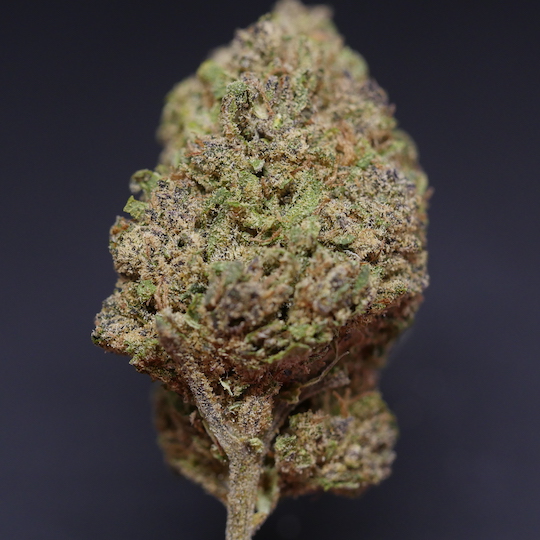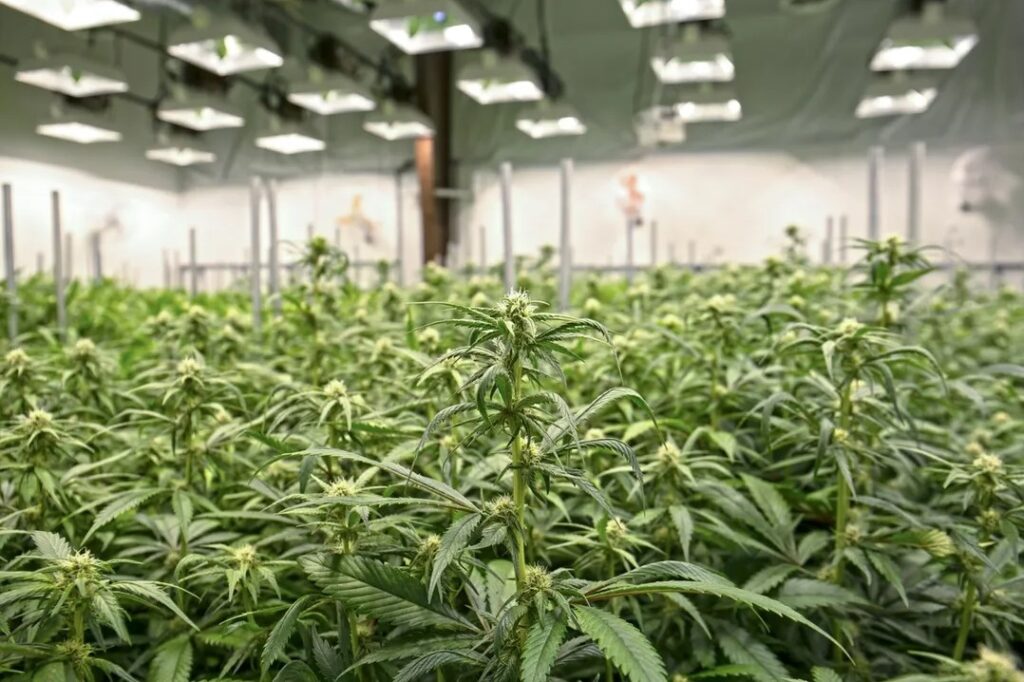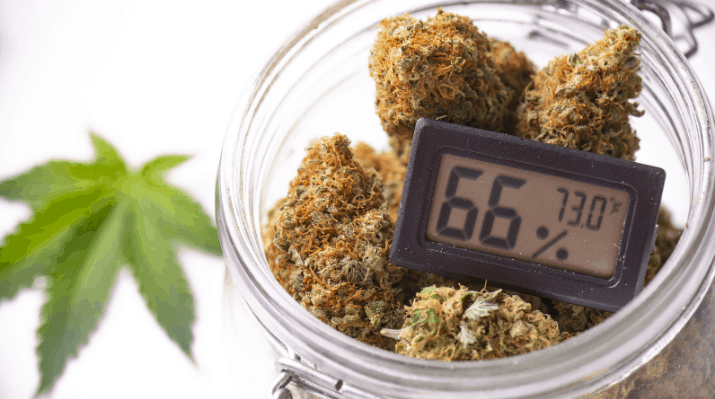Have you ever wondered why your cannabis buds turn out light and fluffy instead of dense and solid? Dense buds not only look visually appealing but also tend to have higher potency, increased weight, and provide a better smoking experience. If you’re looking to grow dense buds, you’ve come to the right place. In this comprehensive guide, we will explore the factors that contribute to bud density and provide you with practical tips on how to achieve the densest, most rock-hard cannabis buds possible.
1. Genetics – The Foundation of Density
When it comes to bud density, genetics play a significant role. Some cannabis strains naturally produce loose or airy buds, even under optimal growing conditions. While you can’t change a plant’s genetics, choosing a strain known for its dense bud structure increases your chances of growing dense buds. Indica-leaning strains are generally more likely to develop dense buds, although there are hybrid strains that also exhibit impressive density. Some popular dense strain recommendations include Bubba, Zkittlez, Runtz, Cement Shoes, Ninja Fruit, and Pink Kush.
2. Feed Me! (Proper Nutrition for Rock Hard Buds)
Proper nutrition is crucial for bud quality, density, and yields. While cannabis plants are relatively forgiving in the vegetative stage, nutrients become more important during the flowering stage. It is essential to provide your plants with the right nutrients to ensure they have everything they need to develop big, dense buds.
During the flowering stage, avoid relying solely on regular potting soil for nutrients. Plants grown in the same soil from seed to harvest may use up the nutrients by the time buds start forming. Consider supplementing your plant with flowering stage nutrients that are high in phosphorus (P) and potassium (K). This additional boost of nutrients helps plants produce the biggest, densest buds. Quality nutrients specifically designed for cannabis cultivation can make a significant difference in bud density.
However, be cautious not to provide too much nitrogen in the flowering stage. High levels of nitrogen can inhibit bud development and lead to dark green leaves. Make sure to choose bloom nutrients with low nitrogen content or adjust the nutrient levels accordingly.
It’s also crucial to address any nutrient deficiencies promptly. Nutrient deficiencies can negatively impact bud development and overall plant growth. If you’re not already using nutrients, consider supplementing with a suitable bloom nutrient to provide your plants with the necessary nutrients for healthy bud development.
| Week | TDS Levels (ppm) | EC Levels (mS/cm) | pH Range | Best N-P-K Ratio |
|---|---|---|---|---|
| 1 | 100-250 | 0.2-0.5 | 5.8-6.5 | 3-1-2 |
| 2 | 250-350 | 0.5-0.7 | 5.8-6.5 | 3-1-2 |
| 3 | 350-500 | 0.7-1.0 | 5.8-6.5 | 3-1-2 |
| 4 | 500-700 | 1.0-1.4 | 5.8-6.5 | 3-1-2 |
| 5 | 700-900 | 1.4-1.8 | 5.8-6.5 | 1-3-2 |
| 6 | 800-1000 | 1.6-2.0 | 5.8-6.5 | 1-3-2 |
| 7 | 900-1100 | 1.8-2.2 | 5.8-6.5 | 1-2-3 |
| 8 | 1000-1200 | 2.0-2.4 | 5.8-6.5 | 1-2-3 |
| 9 | 1100-1300 | 2.2-2.6 | 5.8-6.5 | 1-2-3 |
| 10 | 1200-1400 | 2.4-2.8 | 5.8-6.5 | 1-2-3 |
| 11 | 1300-1500 | 2.6-3.0 | 5.8-6.5 | 1-2-3 |
| 12 (If last week see bottom) | 1300-1500 | 2.6-3.0 | 5.8-6.5 | 1-2-3 |
| 13 (If last week see bottom) | 1300-1500 | 2.6-3.0 | 5.8-6.5 | 1-2-3 |
| 14 (If last week see bottom) | 1300-1500 | 2.6-3.0 | 5.8-6.5 | 1-2-3 |
| 15 (If last week see bottom) | 1300-1500 | 2.6-3.0 | 5.8-6.5 | 1-2-3 |
| 16 (If last week see bottom) | 1300-1500 | 2.6-3.0 | 5.8-6.5 | 1-2-3 |
| Last Week of Flower | <1000 | <2.0 | 5.8-6.5 | 1-1-1 |
3. Intense Light Makes Dense Buds
The quality and intensity of light significantly influence bud density. Choosing the right grow light is crucial for achieving dense buds. While fluorescent lights like T5s can produce dense buds when kept close, they may not penetrate deep into the plant, resulting in fluffier lower buds. Opt for powerful modern LED grow lights or HPS (high-pressure sodium) grow lights for the best results in terms of bud density. LEDs have improved dramatically in recent years and can now produce long, dense buds. High-quality LEDs like the HLG Quantum Boards, Spider Farmer, and Mars Hydro are known for their ability to produce impressive density and yields. HPS grow lights also consistently produce dense buds, but they generate a lot of heat and are best suited for colder grow rooms.
4. Vegetative Stage – Prepare Plants to Make Dense Buds
The vegetative stage is crucial in setting up your plants for dense bud development. By employing proper plant training techniques, you can increase your overall yields and encourage the plant to grow multiple main buds instead of just one. Techniques like low-stress training (LST) or manifolding can help shape your plants to naturally produce denser buds in the flowering stage.
Avoid allowing your plant to develop too many bud sites, especially if it is small or young. Focusing on a few main buds rather than dozens allows the plant to channel its energy into producing larger, denser buds. The number of primary buds you should aim for depends on the size of your plant, with a general rule of 4-10 primary buds for plants under 2 feet tall.
Timing is also critical when switching to the flowering stage. It’s best to switch when your plant has reached about half of its desired final size. This ensures that the plant is big enough to support dense bud development and maximizes your overall yield.
5. Flower Power – Create the Perfect Bud-Building Environment
The flowering stage is the most critical phase for bud quality, density, and yield. Creating the perfect environment for bud development is essential to achieve dense buds. Factors such as temperature, humidity, and airflow can significantly impact bud density.
Controlling temperature is crucial during the flowering stage. Maintaining an ideal temperature range of 24-25°C (75-77°F) during the lights-on period and 22°C (72°F) during the lights-off period helps promote optimal bud development. Temperature control can also influence internodal length, with higher day-to-night temperature differences often resulting in longer internodes.
Proper humidity levels are also important. While specific strains may have different humidity requirements, maintaining a relative humidity (RH) range of 40-50% during the flowering stage generally promotes bud density. Be mindful of excessive humidity, as it can lead to mold and mildew issues.
Airflow is another critical factor. Providing adequate ventilation and air circulation helps prevent stagnant air and promotes healthy bud development. A gentle breeze created by fans can strengthen stems and increase bud density.
6. Nutrient Supplements for Dense Buds
In addition to providing proper nutrition during the flowering stage, certain nutrients and supplements can potentially enhance bud density. While base nutrients contain everything your plants need for healthy growth, some supplements claim to improve bud density. However, it’s important to note that supplements are not necessary to achieve dense buds. The overall growing environment and plant care have a more significant impact on bud quality and yields.
If you choose to use supplements, introduce them one at a time to monitor their effects on bud density. Stick to supplements made by the same company as your base nutrients to avoid any unwanted interactions. Use supplements sparingly, as excessive amounts can harm your plants. Always start with the lowest recommended dose and gradually increase if your plants respond well.
Remember, supplements are not a magical solution for bud density. Focus on creating a favorable growing environment and providing the necessary nutrients for healthy plant growth.
7. The Importance of Leaves
Leaves play a crucial role in bud development. They act as bud feeders, providing the necessary nutrients for bud growth. Removing leaves, especially shade leaves, to increase light penetration to lower buds is not recommended. The loss of production from the top of the plant outweighs any potential gains on the lower parts. Instead, focus on providing sufficient lighting and optimal reflectivity to ensure light reaches all parts of the plant.
Healthy green leaves are essential for producing big, dense buds. Leaves contribute to the overall health and vigor of the plant. Avoid removing leaves unless they are already dying or over-mature. Pruning leaves can disrupt the plant’s ability to efficiently feed the buds. Remember, leaves are bud feeders, not bud food.
8. The Myth of Flushing
Contrary to popular belief, pre-harvest flushing is not necessary and can even be detrimental to bud density. Flushing involves depriving the plant of nutrients and giving it only water in the final weeks before harvest. However, this starves the plant and can lead to decreased bud density, potency, and overall yield.
Flushing has been promoted as a means to improve flavor, but in reality, it may worsen the flavor and quality of the buds. Mother Nature does not flush her plants, and there is no evidence to suggest that flushing improves bud density. In fact, it can actually increase internode length and stretch, resulting in less dense buds.
Instead of flushing, focus on providing your plants with the nutrients they need throughout their life cycle, including the flowering stage. This will help them grow the biggest, densest buds possible.
9. Stem Strength and Dense Buds
In addition to controlling internode length, stem strength plays a crucial role in supporting the weight of dense buds. A larger, thicker stem structure allows for the efficient transport of nutrients to the buds and helps prevent them from collapsing under their own weight.
Simulating a breeze can strengthen stems and promote denser bud development. When plants are exposed to gentle airflow, they naturally respond by thickening their stems and branches. This allows the buds to grow larger and faster. Creating a simulated breeze with fans or providing adequate airflow in your grow space can contribute to bud density.
10. Soil Density and Dense Buds:
The role of soil in cultivating dense cannabis buds is often underestimated. Insufficient drainage in soil can lead to detrimental consequences such as root rot, nutrient lockout, and hindered bud development. To optimize soil structure, it’s essential to incorporate at least 25% perlite or a similar drainage material into the mix.
The addition of perlite enhances soil aeration and drainage, preventing waterlogged conditions that could otherwise suffocate the roots and contribute to root rot. The porous nature of perlite promotes oxygen exchange, fostering a healthier root environment.
Furthermore, consider incorporating a layer of drainage rock at the bottom of the pot. This serves as an extra precautionary measure to prevent water accumulation. Excess water in the soil not only limits oxygen availability to the roots but can also impede nutrient uptake, leading to nutrient lockout.
Scientifically, well-draining soil promotes optimal root function, allowing the plant to uptake nutrients efficiently. Adequate aeration prevents the anaerobic conditions that favor harmful pathogens causing root rot. Research suggests that maintaining a balanced soil structure is fundamental for overall plant health and, consequently, the development of dense and high-quality buds.
11. Patience and Observation
Achieving dense buds requires patience and careful observation. Monitor your plants closely throughout their growth cycle and make adjustments as needed. Each strain may have unique requirements, so it’s important to understand the specific needs of the strains you are growing. By providing the optimal growing conditions, proper nutrition, and a conducive environment, you can maximize your chances of growing dense, rock-hard buds.
12. Harvesting and Curing for Bud Density
Proper harvesting and curing techniques also contribute to bud density. Harvesting at the right time ensures that the buds have reached their maximum density. Trimming excess leaves and drying the buds slowly and evenly helps preserve their density and overall quality. Curing the buds in a controlled environment with the right humidity and temperature further enhances bud density and improves the overall smoking experience.
13. The Art of Growing Dense Buds
Growing dense buds is both an art and a science. While genetics play a significant role, providing the right nutrients, intense light, and a supportive growing environment are essential for achieving the densest, most desirable buds. Remember to observe your plants closely, make adjustments as needed, and be patient throughout the process. With the right knowledge and care, you can cultivate cannabis buds that are not only visually stunning but also deliver exceptional potency and a satisfying smoking experience.






